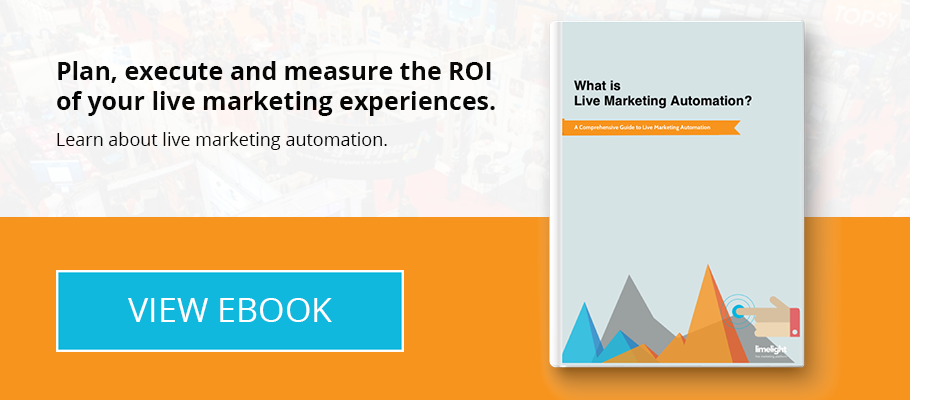3 Proven Brand Engagement Strategies That Drive Results (And Why They Work)
Brand engagement and sales are the ultimate marketing metrics, and one can't exist without the other. As a result, more companies are investing in strategies that drive brand engagement and supercharge their marketing campaigns. According to the International Council of Shopping Centers, 82% of adults are loyal to brands and 84% are loyal to retailers in the United States.
The American Marketing Association (AMA) recently revealed the top activation techniques that drive brand engagement — and the results are surprising.
The key takeaways?
Driving brand engagement is tough, but campaigns without engagement soon fizzle. Below are three engagement activation techniques from AMA's revealing survey.
1. Making an Impression on Customers
Quoting Coca-Cola's senior vice president of strategic marketing, Ivan Pollard, the AMA notes that the average U.S. attention span was just 8.25 seconds in 2016 -- down from 12 seconds in 2000. As a result, brands need to make a strong -- and speedy -- impression on customers.

When it comes to experiential marketing, companies should create memorable experiences that linger with prospects. Giveaways, test-drives, product demos, in-store experiences -- customers are looking for new and exciting ways to engage with a brand.
Mountain Dew recently mastered the art of creating a great consumer experience. The brand recently created interactive experiences at several destinations across the U.K., including music festivals and transportation hubs. Locals could sample Mountain Dew, take part in competitions and receive free samples.
This was all about driving brand engagement -- Mountain Dew wanted to connect with customers in the crowded British beverage market. Digital also played a big role in driving engagement: Mountain Dew increased their social engagement and sharing by incorporating photo booths into the experience.
This experiment in brand engagement paid off. Mountain Dew achieved a 185 percent return on their investment, and 55 percent of people who attended one of the interactive events purchased a Mountain Dew. Moreover, a third of these visitors were brand new customers.
2. Adding Customer Value
The AMA says that adding customer value also drives brand engagement. Customers often weigh up the pros and cons of a product or service before making a purchase, so brands who demonstrate real value often generate more sales. Trade shows, in particular, let prospects personally perceive the value of a product.
The International Consumer Electronics Show, Mobile World Congress, Gamescom -- these are just three examples of annual conventions that increase brand engagement.
The Porsche Experience Center, a 26-acre complex in Atlanta, Georgia, is another example of brand engagement in action. Close to Hartsfield-Jackson Airport, customers sit behind the wheels of some of the company's most exciting sports cars.
From the moment they see a shiny new Cayman GT4 or 919 Hybrid on the venue's floor, customers immediately perceive the value of these products -- and decide whether they should part with their hard-earned cash.
Porsche adds value by letting prospects test drive their vehicles -- a great experiential marketing technique that engages potential customers. Porsche deftly uses social media to advertise this brand experience and engage with consumers.
It's unknown how many vehicles are sold at the Porsche Experience Center, but in 2016, the German automobile retailer had its most successful year to date. The company sold 237,778 vehicles worldwide — six percent more than the previous year.
As a brand marketer, you can add customer value by identifying customer segments, focusing investments on your most valuable customers and creating unique experiences that prospects can't find anywhere else. Optimizing social media pages also pays off: 4.21 percent of all Instagram interactions, for example, are brand engagements, and 88.2 percent of U.S. companies now use social media to amplify their marketing efforts.
3. Boosting Engagement with Brand Partnerships
The AMA notes how partnerships also drive engagement. The convergence of two well-established brand heavyweights can generate marketing campaigns that resonate with customers and move prospects through the sales cycle faster.
Partners don’t even have to belong to the same niche. BMW and Montblanc, Covergirl and Lucasfilm, Ford and Hearst -- these are all matches made in marketing heaven.
Recently, Dutch beer-maker Heineken International teamed up with the perennially popular Isle of Wight Festival for a lucrative partnership that drove engagement across the board. Heineken sold their cider, Bulmers, at the event and targeted the profitable 18-to-24-year-old demographic.
The result?
More than 13,000 festival-goers interacted with the company at the festival and two million young people saw promo spots on social media, according to Heineken's cider director Emma Sherwood-Smith.
"We have to provide content that will appeal to these consumers and deliver it in a way that fits with their lives," she says. "Creating unique content, which is undoubtedly how Bulmers brings millennials closer to the brand."
More and more are brands noticing the value of experiential and live marketing — and they’re becoming more creative with their experiential efforts too. If you're looking to increase brand engagement and accelerate your live experience marketing efforts, learn about live marketing automation.



